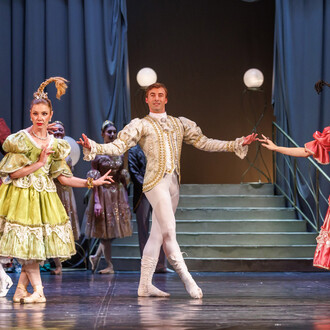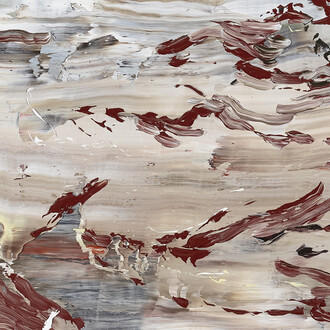Museo Nivola is proud to present Volare guardare costruire (to fly, to look, to build), a site-specific project by Nathalie Du Pasquier, a French artist and designer based in Milan.
Conceived especially for the museum’s spaces, the exhibition takes the form of a retrospective dedicated to the artist’s painting production from her beginnings to the present day. At the same time, it is an environmental installation that merges painting, architecture, and design. The exhibition unfolds through a series of structures designed by the artist, transforming the museum into a space to walk through, explore, and inhabit.
The exhibition thus initiates a dialogue between the artist’s ephemeral architectures and the historical structure of the building – the former washhouse of Orani, now the beating heart of Museo Nivola.
Inside these “rooms” and on the walls of the museum are works created from the 1980s to today, which tell the story of the evolution of Du Pasquier’s visual language: a lexicon made of figuration and abstraction, in which human figures and the narrative dimension gradually give way to the theme of still lifes, made of simple and everyday objects, which delicately evoke the human presence, and then again to geometric shapes and abstract constructions. The whole is bathed in a midday light that gives the paintings a metaphysical air, almost as if we were in front of modern versions of Morandi’s canvases or, in other ways, of the purist ones of Le Corbusier and Ozenfant.
The title, Volare guardare costruire, refers to three phases of Du Pasquier’s pictorial production. Volare (to fly) evokes the moment of detachment from the design of design objects towards the freer practice of painting. And it is perhaps no coincidence that many of the works of this phase present scenes seen from above, with a bird’s eye view, a symbol of the power of the imagination, of its ability to soar high and expand freely.
Guardare (to look) refers to a second phase, to the need to abandon purely imaginative scenes to dedicate oneself to a quiet and precise observation of reality, even of the most everyday and apparently insignificant objects, which instead reveal to an interested gaze, extraordinary forms, precious details and the ability to understand within oneself the complexity of existence. They are visions that the artist defines as “very silent and very still”, which invite one to rediscover the pleasure of the sensitive world through silent and attentive observation.
Dissatisfied, at times, with the sensible appearance of reality, Du Pasquier finally dedicates herself to Costruire (to build), creating original structures, small three-dimensional abstract constructions that are then portrayed with the brush, brought back to the two-dimensional plane of her canvases. Thus, she triggers a complex dynamic between reality and representation, which is a wonderful metaphor for painting.
With this exhibition, the Nivola Museum confirms its commitment to promoting the dialogue between art, design and architecture, offering an immersion in the visionary world of an artist who continues to reinvent the rules of seeing and building.










